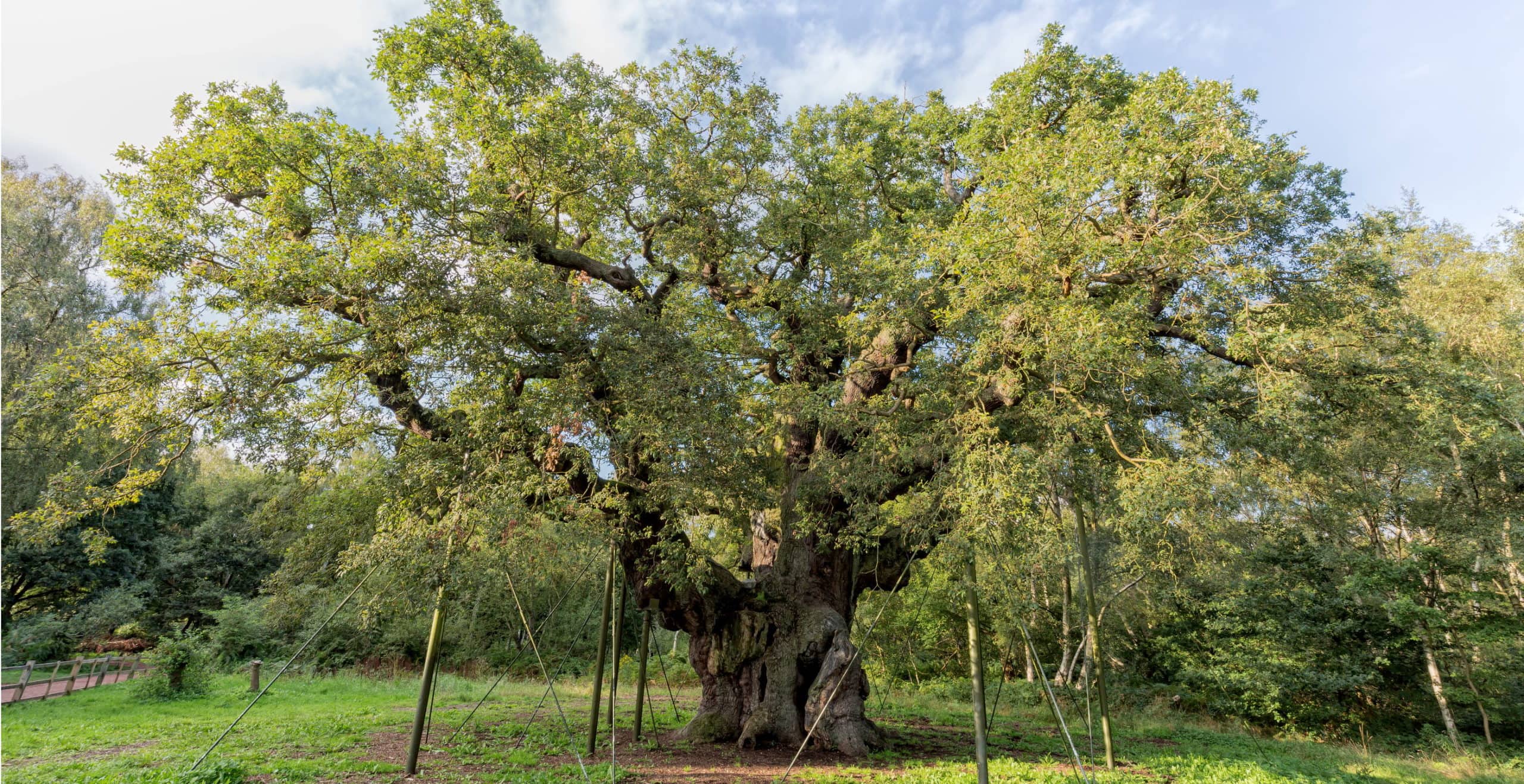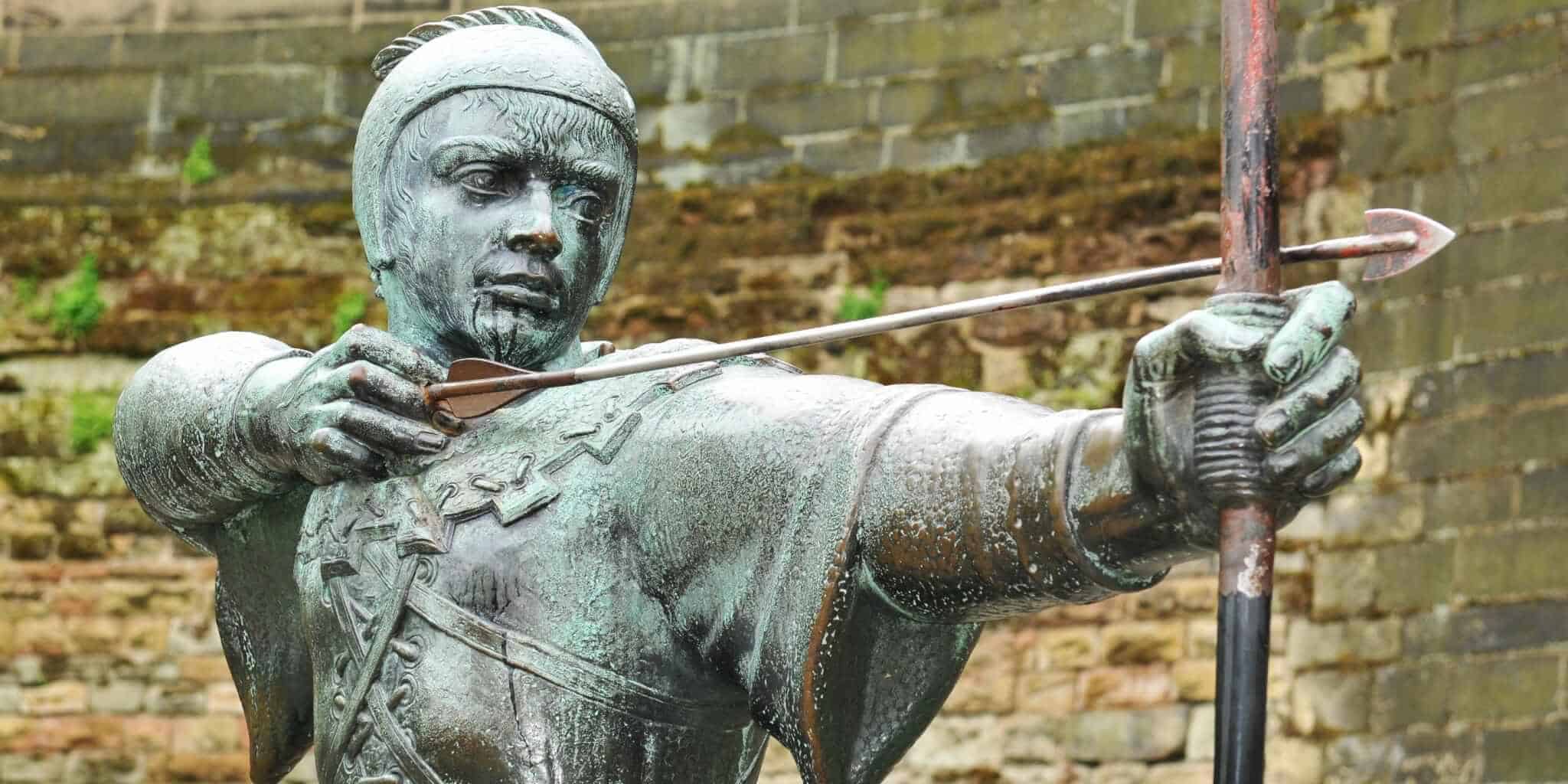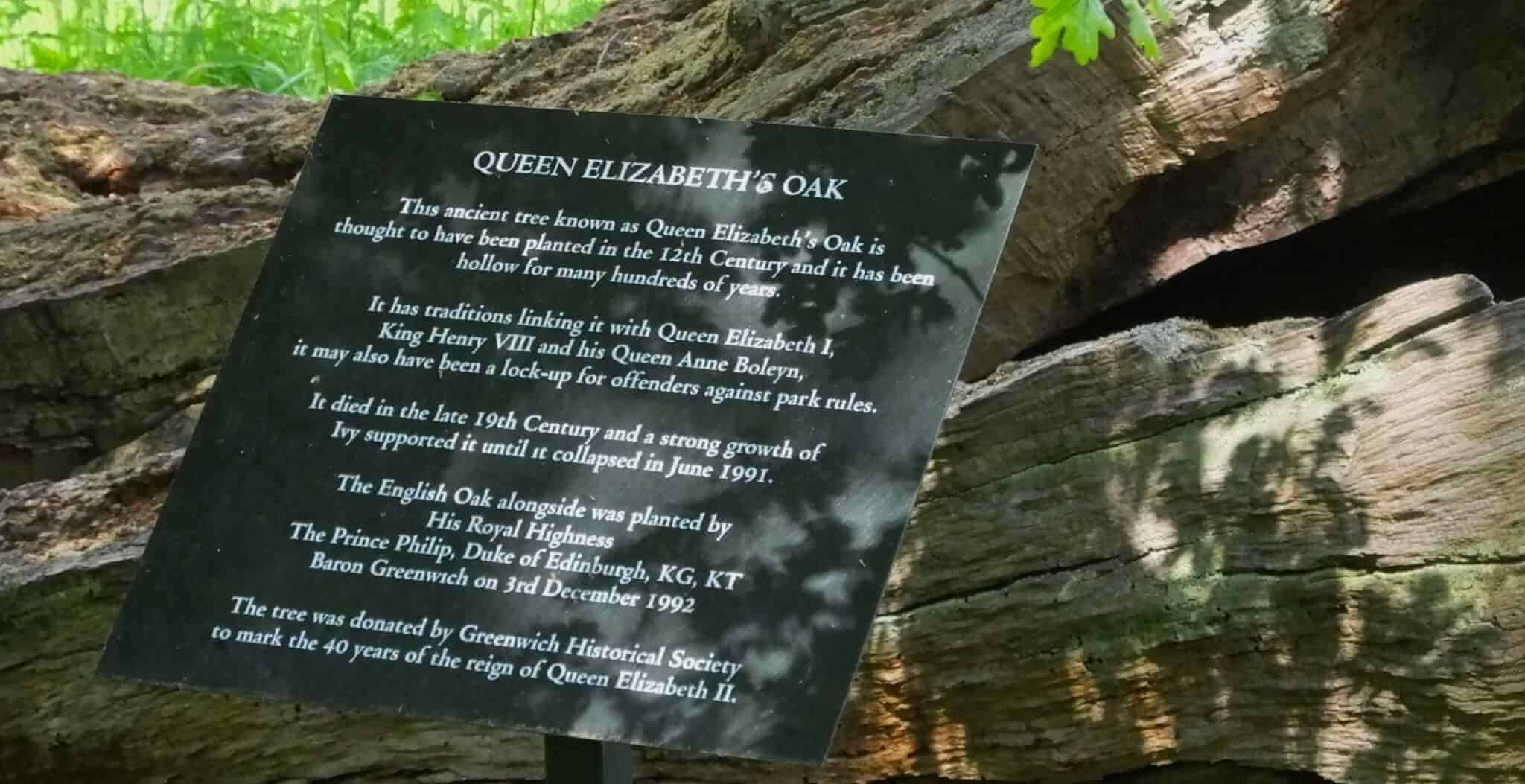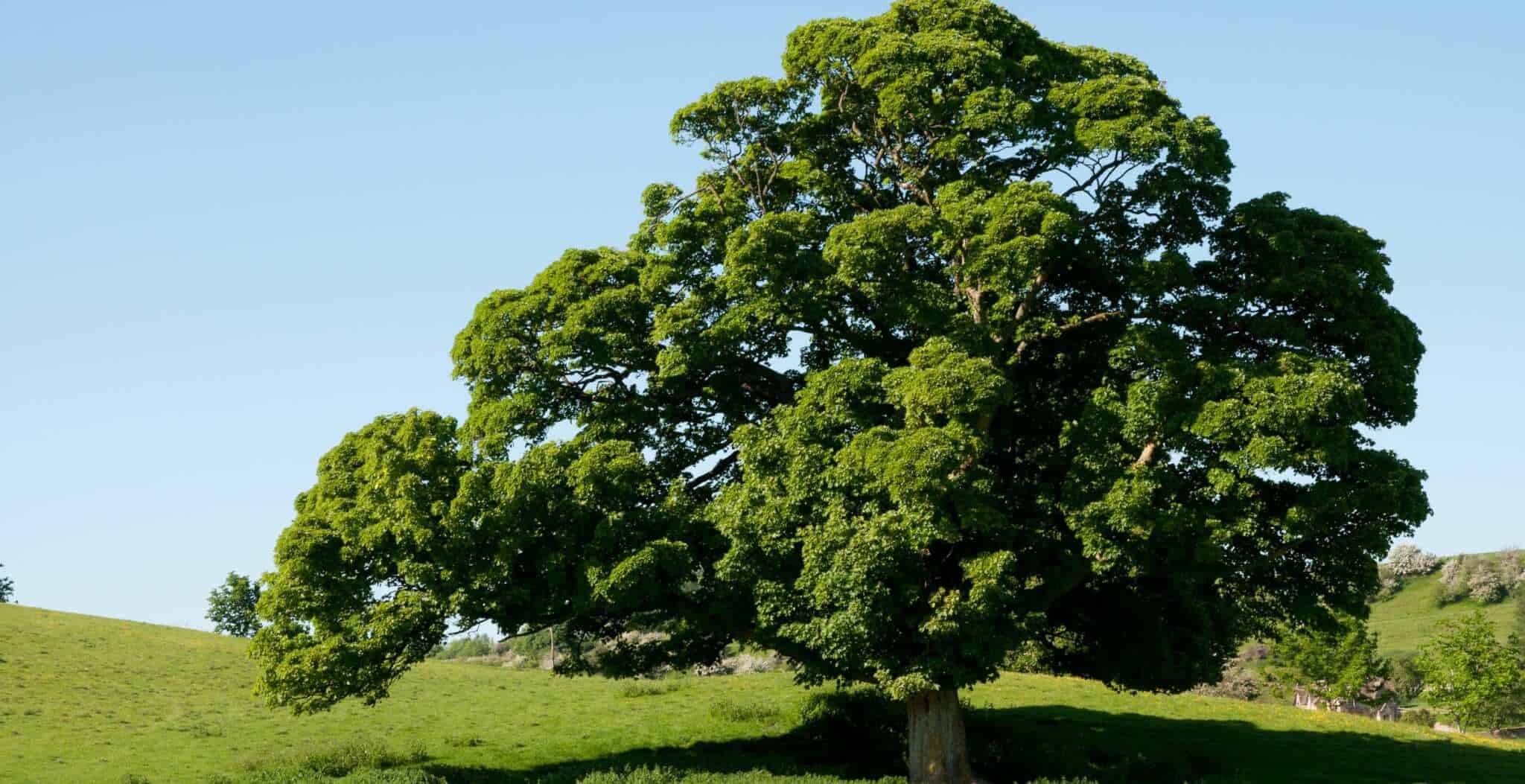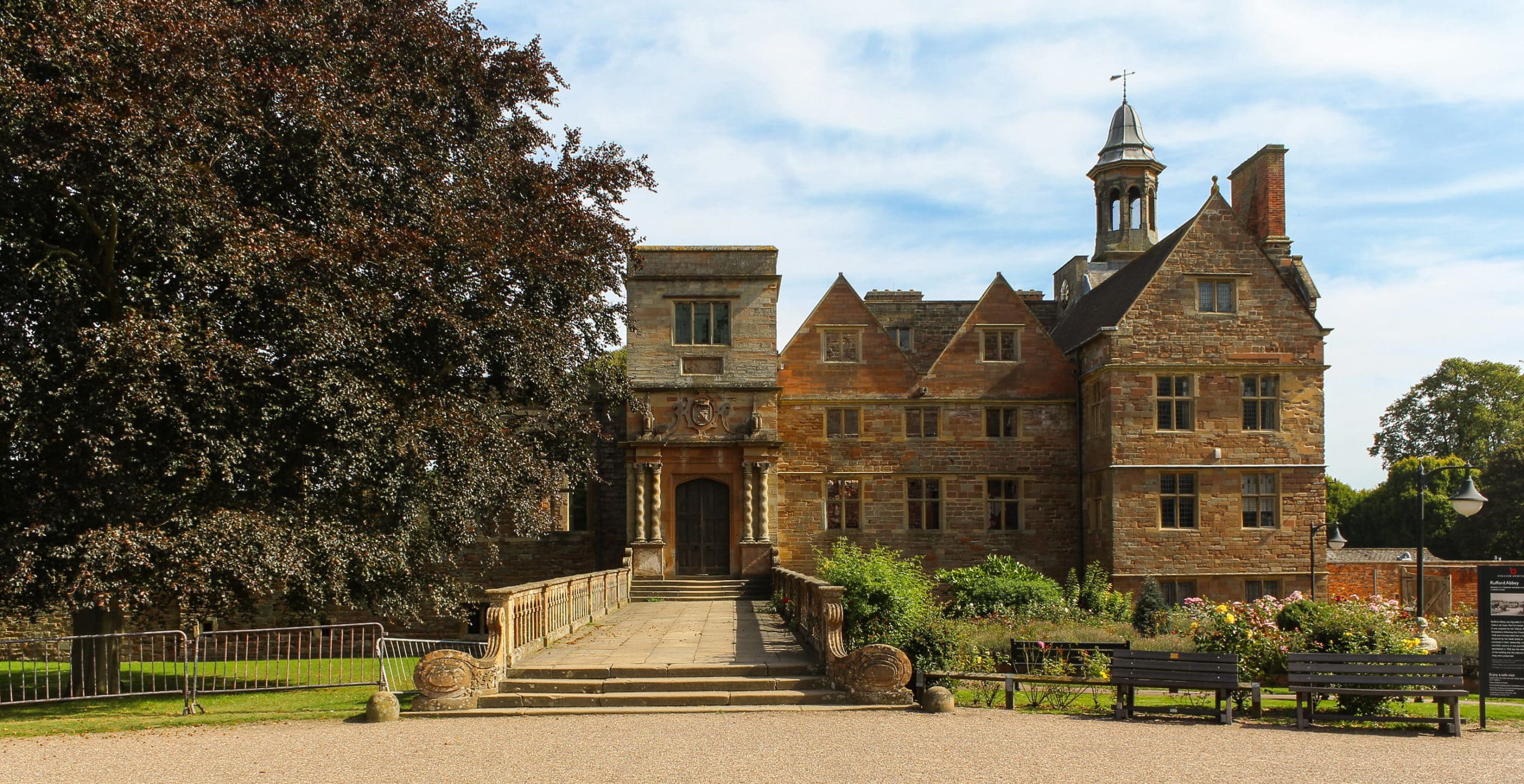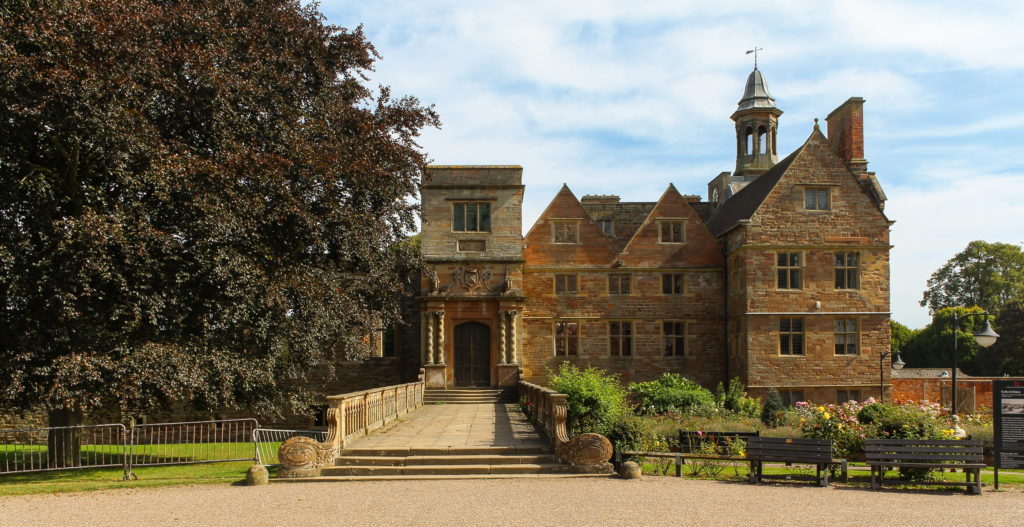One of the most defining features of the county of Nottinghamshire is Sherwood Forest which is a woodland and former royal hunting ground, perhaps most commonly known as the location for the legendary outlaw Robin Hood.
In 958 AD it was called Sciryuda, meaning “woodland belonging to the shire”.
Today, Sherwood Forest is a designated National Nature Reserve still containing ancient oaks dating back thousands of years, making it not only a site of natural outstanding beauty but an important conservation area, containing the natural history of this once vast and magnificent forest.

The history of Sherwood and its relationship with those who lived in its shadow dates back as far as the Roman times, when wood clearance opened up the landscape and created heathland, with low-lying shrubs such as heather dotting the landscape. Those humans who lived in and around the forest over centuries have in turn reshaped the landscape and defined it for years to come.
Furthermore after the Romans, farming communities established a way of life in these parts and repurposed the area for grazing, creating grasslands which punctuated the denser shrubbery and thicket of the forest.
By the time of the Norman invasion in 1066, the forest looked set to acquire a new purpose, this time as a royal hunting forest which would become popular with several generations of kings. Today it is possible to view the ruins of King John’s hunting lodge at the village of Kings Clipstone.
The medieval landscape was a mixture of open grassland and dense forest made up of birch and oakwood. Moreover, as the forest grew in its popularity for use as a hunting ground, more deer parks emerged.
Eventually, further settlement in the form of new villages and towns would increase the pastureland whilst the wood was felled for construction, heating and other purposes such as shipbuilding.
By the twelfth century the area would become popular with various Christian orders who were given land by the Crown in order to establish abbeys such as the famous Newstead and Rufford Abbey. Unfortunately, all that remains of these religious sites are ruins after the impact of Henry VIII’s dissolution of the monasteries act, however their grounds remain as a testament to the settlement of people, religion and culture in this period of medieval British history.
It was during this period that the legend of Robin Hood and his “merry band of men” were believed to have called Sherwood Forest their home. With early manuscripts referring to the outlaw as “Robyn hode in scherewode stod”, the Lincoln Cathedral Manuscript records a Robin Hood Song making reference to his location in the forest.
It was believed that this infamous outlaw and his men inhabited specific locations such as the famous Major Oak which has survived for centuries and can still be visited today.
This glorious ancient oak is now a focal point of the remaining country park. With its heritage status and great efforts to preserve the tree for more centuries to come, one cannot help but marvel at such a beautiful and historic tree.

Whilst the exact age of the Major Oak is not defined, it is believed to be around 800-1000 years old, weigh around 23 tonnes and have a circumference of 10 metres and a canopy which spreads out over 28 metres.
Whilst the Major Oak has stood the test of time, other ancient oaks sadly have not, as development from the medieval period onwards threatened the ecosystem and survival of the forest.
At the time when Robin Hood and his men were believed to have inhabited the forest, woodland covered around one-fifth of the entire county. At this point a central road taking travellers from London as far as York went through Sherwood, leaving those who used the roads vulnerable to outlaws who could rob them of their belongings as they travelled.
Whilst the legend of Robin Hood continues to be debated, this heroic character has become inextricably linked with not only Sherwood but the entire county as a defining character and representation of medieval Nottinghamshire.

Statue of Robin Hood at Nottingham Castle.
The medieval depiction soon developed an almost cult like status around Robin Hood’s legendary fighting skills as an archer and swordsman as well as his generosity to the poor whilst he fought the tyranny of the rich. The narrative of his life and the characters who surrounded him, such as Maid Marian and the Sheriff of Nottingham, has since become an enduring cultural legacy which has crossed into literature, theatre and film.
Meanwhile, whilst Robin Hood and his men walked the forest floor, the woodland became an increasing source of revenue for its medieval inhabitants. It was not only a source of life in terms of domestic fuel and house building but in time it also began to support industry such as farming, whereby the grazing pigs could feed on the acorns. Moreover, charcoal burning and tanning leather would also find the forest a useful resource.
Over the centuries, the use of the forest would adapt to its new residents and by the time Henry VIII had enacted his dissolution of the monasteries act, more changes were afoot. The impact on religious holy sites such as Newstead Abbey and Rufford Abbey was to have them fall into the lands of local gentry who in turn would transform these buildings into stately homes whilst repurposing the lands around it into vast parklands and gardens for their own pleasure.
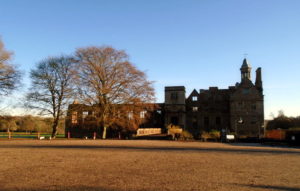
Remains of Rufford Abbey and surrounding parkland.
It was in this late medieval period when vast estates punctuated the county, owned by a rich elite, that the land became landscaped and managed in order to ensure a greater revenue. The collection of these estates was referred to as the “Dukeries”, owned by titled aristocrats who transformed the land and its profit margins, by farming the land and felling trees which they sold for construction of homes, furniture and even shipbuilding for the growing navy.
As the years rolled by, the changing fortunes of the forest rose and fell with the prospect of those few landowners who had the power to change the landscape as they saw fit.
Moreover, during the turbulent period of King Charles I reign and the ensuing English Civil War, the forest would suffer with a lack of attention and much needed management, something which King Charles II would later try to rectify.
By the time of the Georgian era and beyond, one of the biggest threats posed to Sherwood was industrialisation which grew rapidly in its expansion, capabilities and scale.
The famous Rufford Abbey acquired a lake which was built in order to power a corn mill whilst King’s Mill Reservoir was constructed to feed the local area.
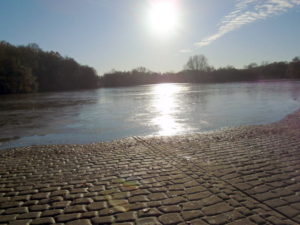
In the late nineteenth century, Sherwood would acquire a new kind of popularity, not for its agricultural potential, industrial capability or settlement, but instead for tourism. In the Victorian era the emergence of travel for enjoyment became increasingly popular and Sherwood would in time become one such destination favoured by those seeking a natural escape from the towns and cities.
In fact, it was Sir Walter Scott and other famous romantic authors of the day who would increase the popularity of Sherwood Forest and thus contribute to increased visitor numbers.
Alongside the impact of tourism, the greatest modern threat posed to the forest in recent times has been construction, industry and settlement. As the mining industry became a vital source of revenue for local people it also attracted more to settle in the area. With increased industrialisation, the infrastructure necessary to support it and the creation of increasingly large towns would soon envelope the landscape by the twentieth century.
During the First and Second World Wars, the forest was used once again for practical purposes, serving as a military camp.
Today, whilst its size is much diminished, attempts to conserve and protect the remaining site are ongoing.
Now, more than ever, its importance as a place of national heritage and natural splendour cannot be overstated. Sherwood Forest is a beautiful woodland with a rich history and an even richer ecosystem which continues to be the lifeblood of the area, supporting hundreds of species of insects, plants and animals, hopefully for many years to come!
Jessica Brain is a freelance writer specialising in history. Based in Kent and a lover of all things historical.
Photographs © Jessica Brain.
Published: 24th September 2021
**Sherwood Country Park can be found just north of the village of Edwinstowe
